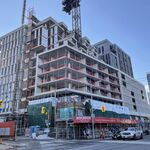nfitz
Superstar
Probably not - but that's essentially what Premier Davis and Transport Minister James Snow promised Pickering and Oshawa 40 years ago.Obviously a Pickering connection is not happening on our lives.
Until their Progressive Conservative replacements cancelled it. Though I don't think any Progressive Conservative leader has been particularly Progressive (or progressive) since Davis.








